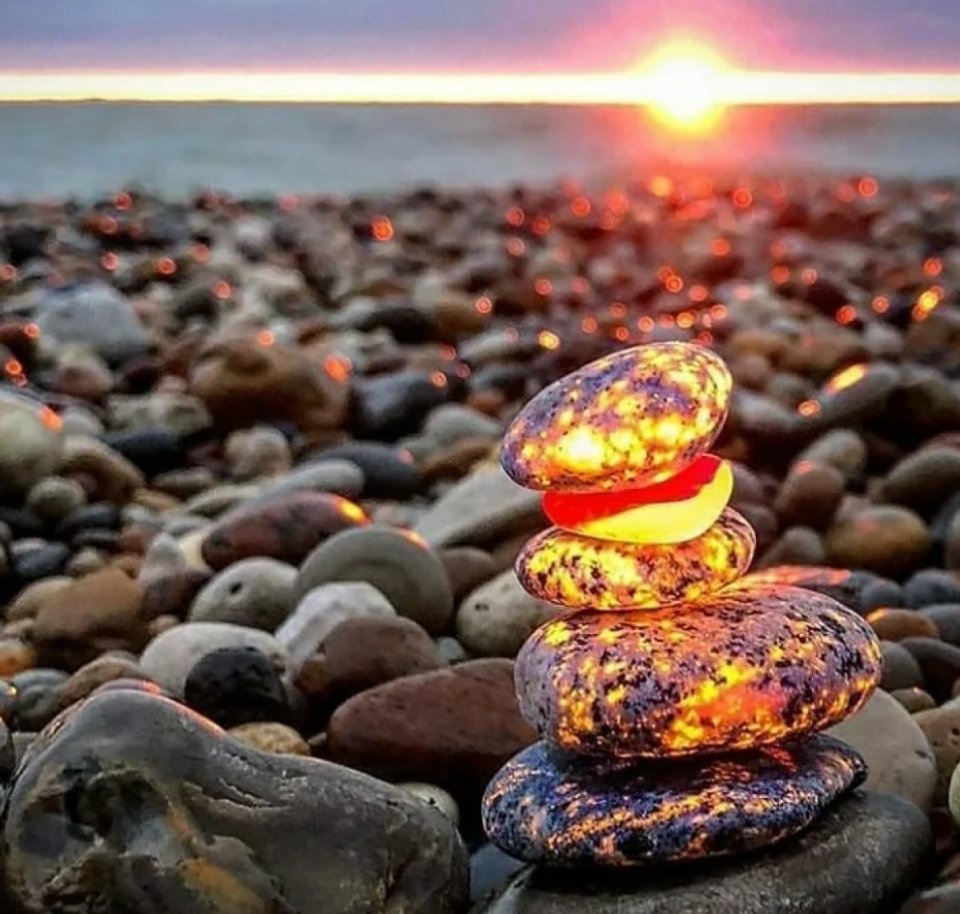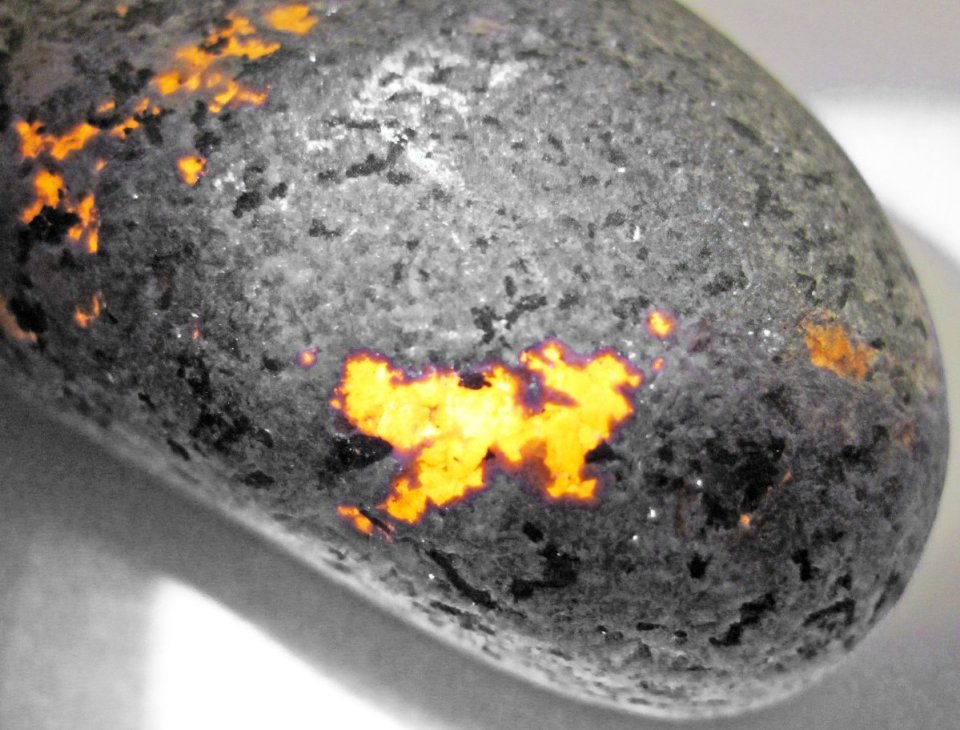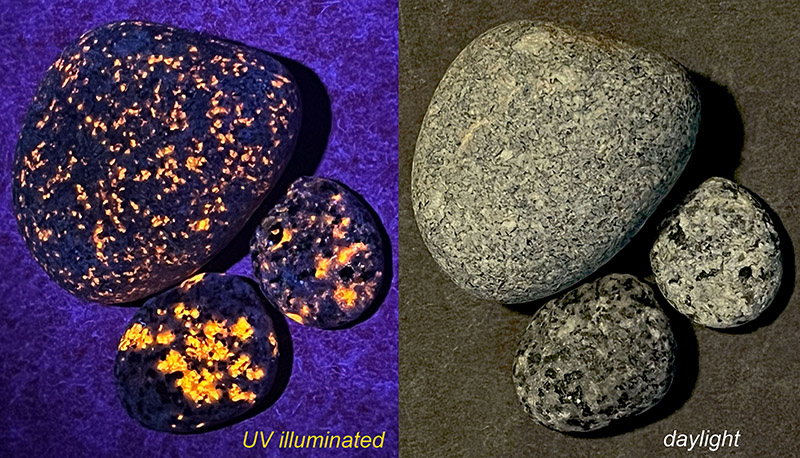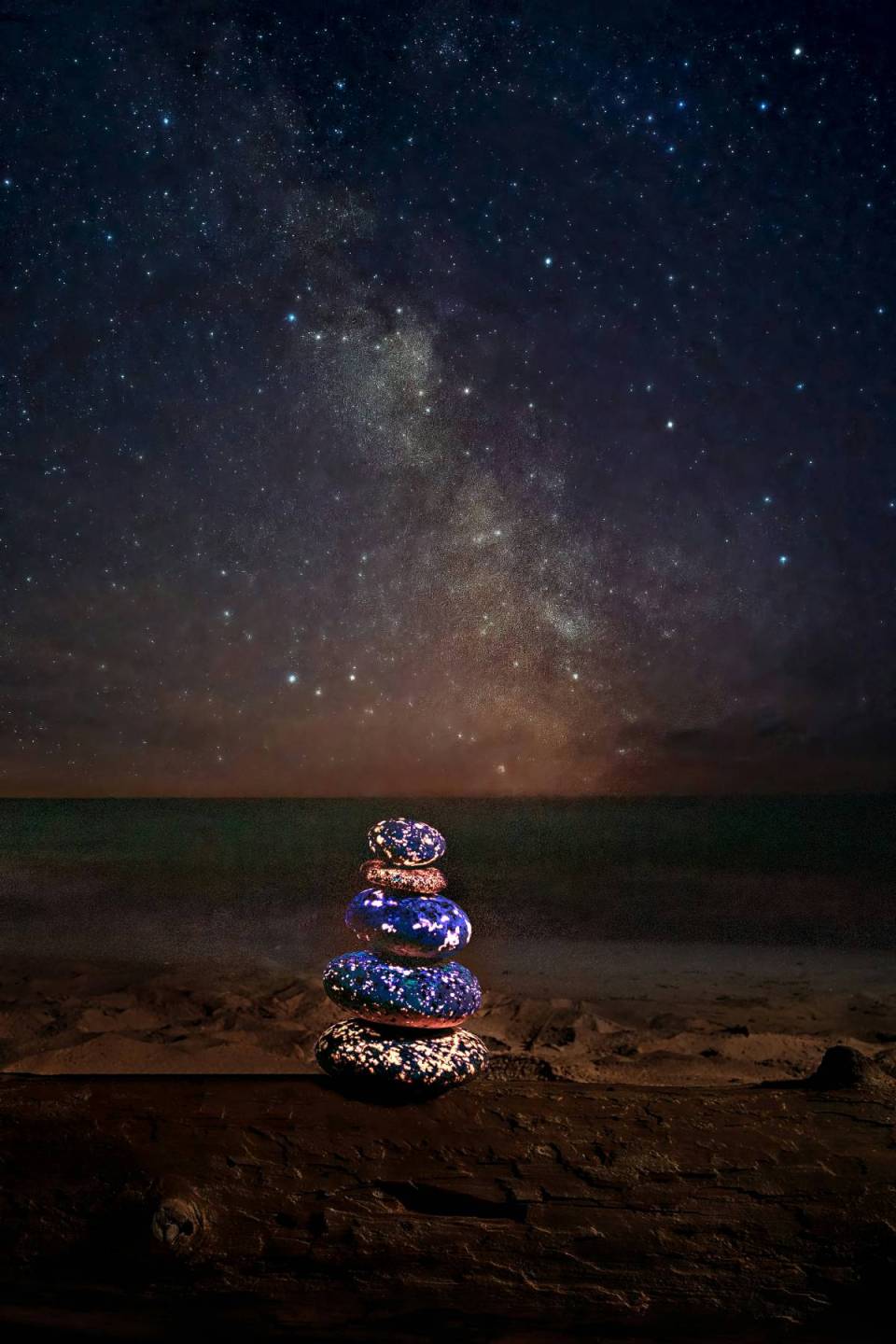Looking for a unique and fascinating rock to add to your bucket list? How about a Yooperlite? Never heard of them? That’s not surprising, as they were only discovered recently.

Yooperlites are truly mesmerizing. Photo: Brad Switzer
Yooperlites, aka Glowdalites, are fluorescent rocks that are found in the Upper Peninsula of Michigan. They are a type of syenite rock that contains a high concentration of sodalite, a mineral that glows under ultraviolet light. Yooperlites come in a variety of colors, including orange, yellow, green, and blue.
Yooperlites were only first discovered in 2017 by Erik Rintamaki, a Michigan rockhound (the fact that you need UV light to see them glow probably accounts for this late discovery). Rintaki was searching for rocks on the shore of Lake Superior at night with a UV flashlight in 2017 when he noticed some rocks that glowed brightly in different colors.

Yooperlites were only discovered in 2017. Photo: Tarah Nicole Hoffman
He had never seen anything like them before and decided to send some samples of his find to the Michigan Technological University and the University of Saskatchewan for analysis. They confirmed that the rocks were syenite with sodalite inclusions, and that they were probably formed about 1.1 billion years ago during a period of volcanic activity.
Rintaki decided to name them Yooperlites, after the slang term for people who live in the Upper Peninsula of Michigan (U.P.), also known as Yoopers. He even trademarked the name and started selling the rocks online and at shows. He also organizes tours and workshops to teach people how to find and identify Yooperlites. His discovery sparked a lot of interest and excitement among rock lovers and the media.

It’s the sodalite content that glows. Photo: James St. John
But why do these rocks glow? As noted above, it is due to their high concentration of sodalite, a blue-colored mineral that belongs to the silicate group and is often found in igneous rocks, such as syenite and granite, that form from molten magma. Yooperlites look very ordinary in daylight, but when you shine a UV light on them, they reveal their hidden beauty.
Yooperlites can be found mainly along the shores of Lake Superior in Michigan, especially in the areas of Grand Marais, Paradise, Whitefish Point, and Brimley. They can also be found inland in some places where glacial deposits have carried them. According to some sources, they can also be found across much of the Great Lakes and even scattered around the world at different places. However, finding them is not easy, as they blend in with other rocks and pebbles.

If you want to find these otherwise ordinary-looking stones, you best go at night, armed with a UV flashlight. Photo: Mark Jones/R&D World
The best way to find Yooperlites is to use a UV flashlight with a wavelength of 365 nanometers (nm), which is the optimal frequency for achieving sodalite fluoresce. You also need to search at night or in dark conditions, as daylight will wash out the glow. You should wear protective eyewear and gloves when handling UV light sources, as they can be harmful to your eyes and skin.
Once you spot a glowing rock, you can pick it up and examine it more closely. You can also use a magnifying glass or a loupe to see the details of the sodalite crystals. You might be surprised by the variety of colors and patterns that Yooperlites display under UV light.

Yooperlites are definitely worth the search. Photo: Brad Switzer
Be careful though as collecting rocks within national parks or national lakeshores is prohibited by law. You also cannot collect and keep Yooperlites from private land without the permission of the landowner. The same holds for historical sites such as parks or areas designated for preservation.
And even if you can legally collect them at a certain location, isn’t it a better idea to admire them for a while, take a few photos, and leave them where they belong? That is, in nature, where future generations can admire them too.

